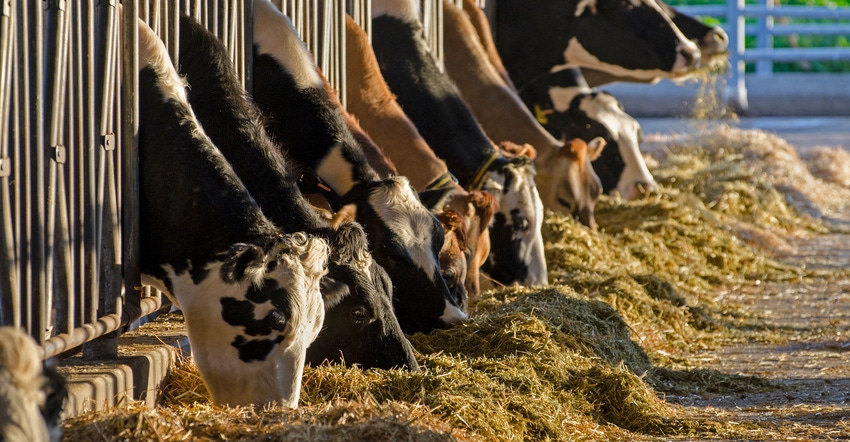December 28, 2021

USDA will begin issuing additional payments this month for dairy producers who enrolled in 2020 and 2021 coverage through the Dairy Margin Coverage program.
The Farm Service Agency updated the feed cost calculation by using 100% premium alfalfa hay, rather than 50% premium hay, in determining the monthly margin, which means an additional $6.18 million for dairy producers in Michigan.
Payments will be retroactive to Jan. 1, 2020. Dairy operations with 2020 and 2021 contracts will be paid automatically for the applicable months.
The voluntary risk management program offers financial protection to dairy producers when the difference between the all-milk price and the average feed cost (the margin) falls below a certain dollar amount selected by the producer.
So far in 2021, USDA data shows DMC payments of $51.42 million have triggered for the 736 Michigan dairy operations enrolled in the program, averaging $69,868 per farm. With higher feed costs, it’s expected the state’s 67.5% enrollment rate for 2021 will increase in 2022, with 1,090 dairy operations eligible.
2022 DMC, supplemental DMC enrollment details
In addition to updating the feed cost, FSA also opened sign-up for the 2022 DMC program and the new supplemental DMC, which runs through Feb. 18, allowing producers to get coverage for another year and get additional assistance through the new supplemental DMC.
Supplemental DMC will provide $580 million to assist small- and midsized dairy operations that have increased production over the years but were not able to enroll the additional production. Those who qualify will be able to retroactively receive payments for that supplemental production.
Eligible dairy operations with less than 5 million pounds of established production history may enroll supplemental pounds based upon a formula using 2019 actual milk marketing, which will result in additional payments. Producers will be required to provide FSA with their 2019 Milk Marketing Statement.
Supplemental DMC coverage is applicable to calendar years 2021, 2022 and 2023. Participating dairy operations with supplemental production may receive retroactive supplemental payments for 2021, in addition to payments based on their established production history.
Supplemental DMC will require a revision to a producer’s 2021 DMC contract and must occur before enrollment in DMC for the 2022 program year. Producers will be able to revise 2021 DMC contracts and then apply for 2022 DMC by contacting their local USDA service center.
For 2022 DMC enrollment, dairy producers can determine the appropriate level of coverage for their operation using the online dairy decision tool, developed in partnership with the University of Wisconsin.
Ernie Birchmeier, Michigan Farm Bureau senior industry relations specialist, says the online platform allows dairy producers to evaluate various scenarios using different coverage levels available through DMC.
“With DMC sign-up currently open, Michigan dairy producers are encouraged use this new support tool to help make decisions on participation in the program,” Birchmeier says. “Dairy producers have faced some very serious economic challenges over the years, but the DMC program has helped dairy producers weather the ups and downs in the industry.”
Birchmeier says the University of Wisconsin launched the decision support tool in cooperation with FSA, and it is funded through a cooperative agreement with the USDA Office of the Chief Economist.
The tool is designed to help producers determine the level of coverage under a variety of conditions that will provide them with the strongest financial safety net. It allows farmers to simplify their coverage level selection by combining operation data and other key variables to calculate coverage needs based on price projections.
The decision tool assists producers with calculating total premiums costs and administrative fees associated with participation in DMC. It also forecasts payments that will be made during the coverage year.
“The new Dairy Margin Coverage program offers very appealing options for all dairy farmers to reduce their net income risk due to volatility in milk or feed prices,” said Mark Stephenson, director of dairy policy analysis at the University of Wisconsin.
“Higher coverage levels, monthly payments and more flexible production coverage options are especially helpful for the sizable majority of farms who can cover much of their milk production with the new 5 million-pound maximum for Tier 1 premiums. This program deserves the careful consideration of all dairy farmers.”
To learn more or to participate in DMC, producers should contact their local USDA service center.
You May Also Like




